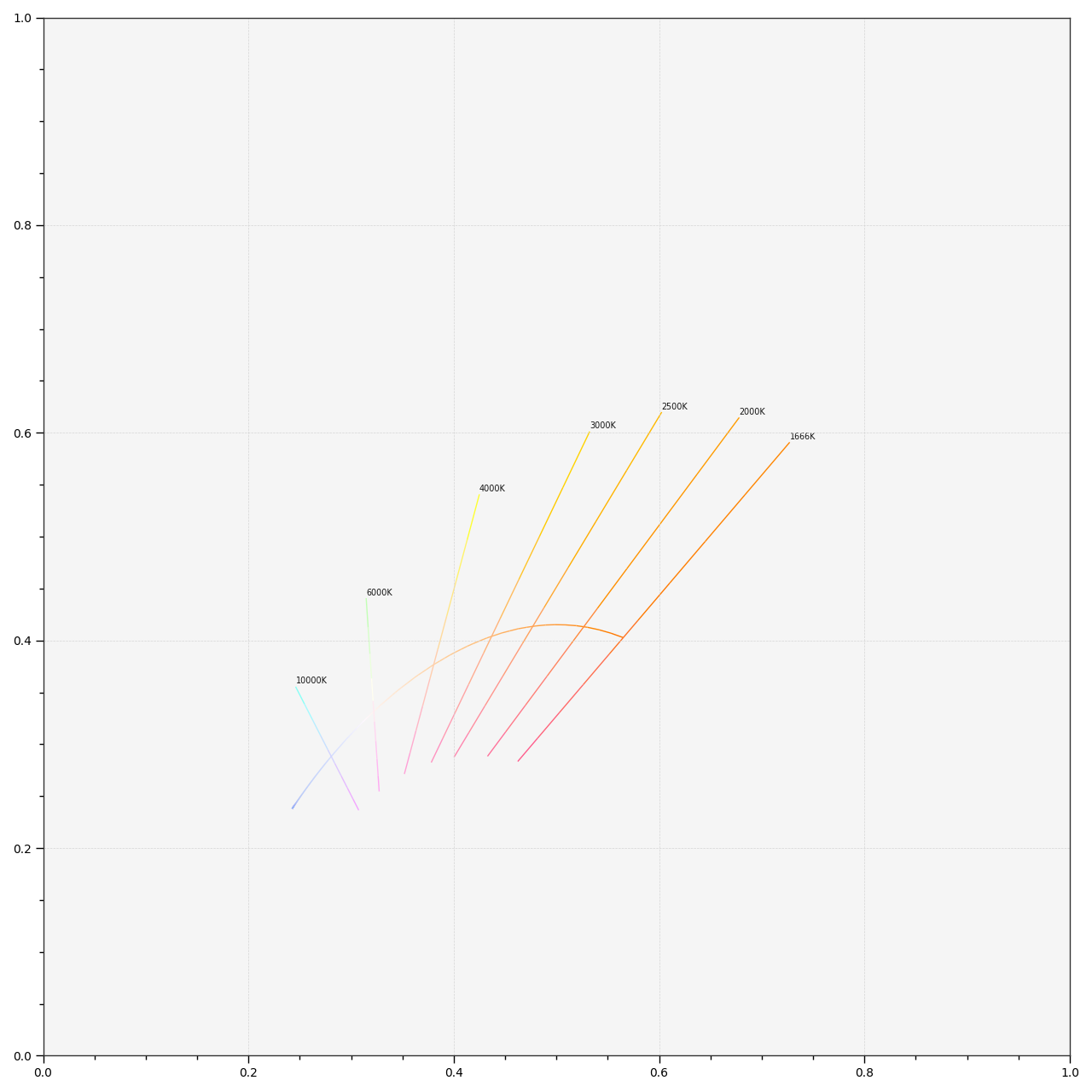colour.plotting.temperature.plot_planckian_locus¶
- colour.plotting.temperature.plot_planckian_locus(planckian_locus_colours: Optional[Union[ArrayLike, str]] = None, planckian_locus_opacity: Floating = 1, planckian_locus_labels: Optional[Sequence] = None, method: Union[Literal['CIE 1931', 'CIE 1960 UCS', 'CIE 1976 UCS'], str] = 'CIE 1931', **kwargs: Any) Tuple[plt.Figure, plt.Axes][source]¶
Plot the Planckian Locus according to given method.
- Parameters
planckian_locus_colours (Optional[Union[ArrayLike, str]]) – Colours of the Planckian Locus, if
planckian_locus_coloursis set to RGB, the colours will be computed according to the corresponding chromaticity coordinates.planckian_locus_opacity (Floating) – Opacity of the Planckian Locus.
planckian_locus_labels (Optional[Sequence]) – Array of labels used to customise which iso-temperature lines will be drawn along the Planckian Locus. Passing an empty array will result in no iso-temperature lines being drawn.
method (Union[Literal[('CIE 1931', 'CIE 1960 UCS', 'CIE 1976 UCS')], str]) – Chromaticity Diagram method.
kwargs (Any) – {
colour.plotting.artist(),colour.plotting.render()}, See the documentation of the previously listed definitions.
- Returns
Current figure and axes.
- Return type
Examples
>>> plot_planckian_locus(planckian_locus_colours='RGB') ... (<Figure size ... with 1 Axes>, <...AxesSubplot...>)
